Warning: Reading this may lead to a fondness for dandelions.
What do these flowers have in common?
Zinnias

Sunflowers

Cosmos

Marigolds
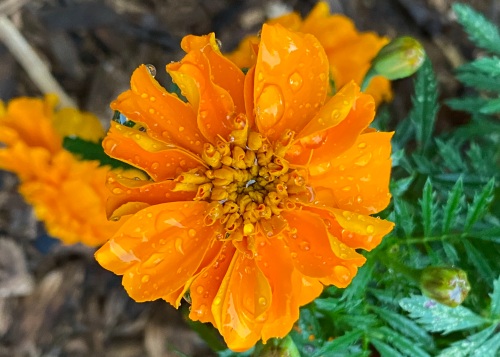
Asters

Goldenrod

Dandelions
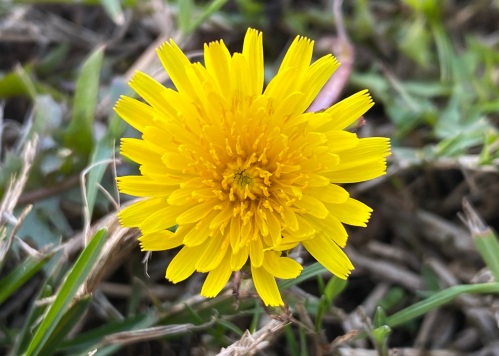
Artichokes

Artichokes?
I’ll give you a hint, the artichoke is a bud! If left to mature on the plant, it will produce hundreds of purple, narrow-tubed flowers cradled in one base.

These flowering plants are all part of the Asteraceae Family.
Plants are placed in families based on characteristics they share. These flower heads are all round and have a flat central disc. While each flower appears to be a single flower, all Asteraceae flowers are actually a composite of many small flowers, each with their own reproductive parts, packed densely into one receptacle.
The flowers in the center disc are called disc florets and those surrounding it are ray florets.

As beautiful as flowers are to us humans, flowers are trying to impress insects and birds. Pollination is the primary objective of a flower. Once pollination happens, the flower withers and dies. Pollination activates the fertilization of seeds, ensuring reproduction of the plant. Both ray and disc florets have all the necessary reproductive parts.

Another feature of plants in the Asteraceae family is their sepal-like leaves, called bracts, on the flower head’s underside. Bracts surround and protect the base of the plant where the seeds mature. They are arranged in either an overlapping or a linear pattern.
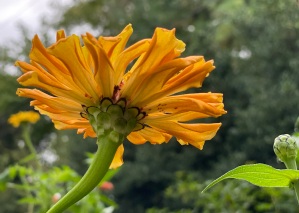



I took a few bracts off to see the seeds beneath — they are packed in there!

Rings of new disc florets emerge gradually in an orderly fashion from the disc’s outside perimeter to the center. A cone-shaped arrangement forms as the underlying seeds grow larger and require more space. This was a marvelous insight for me; one of the traits we love about zinnias is how long the flowers last. They last that long to ensure that every ovule (pre-seed) gets fertilized.
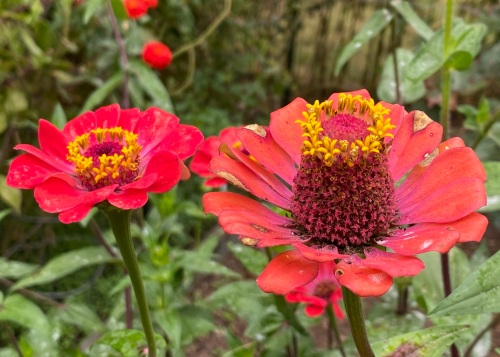
If you dissect a flower head, you can see the many seeds at various stages of maturation.

A good visual of a composite flower head is the sunflower.

Sunflowers are a bee magnet. We hear a lot about the benefits of growing “pollinator” plants in a garden. You need look no further than plants in the Asteraceae family for colorful flowers that attract insects.

The end result is hundreds of sunflower seeds to eat and ensure reproduction.

Not all Asteraceae plants have both ray and disc florets. A few species have one or the other. Dandelions, for example, are comprised of ray florets only. With my new appreciation of flowering plants, I don’t think I will be as quick to pull dandelions out of my vegetable garden anymore. After all, my Sicilian immigrant grandmothers picked dandelion leaves to eat. The leaves are a good source for vitamin C. During early times, the cool-weather plants were grown in kitchen gardens for settlers to eat to prevent scurvy.

Artichokes are comprised of all disc florets. The bristles that make up the choke are actually hundreds of very immature flowers.
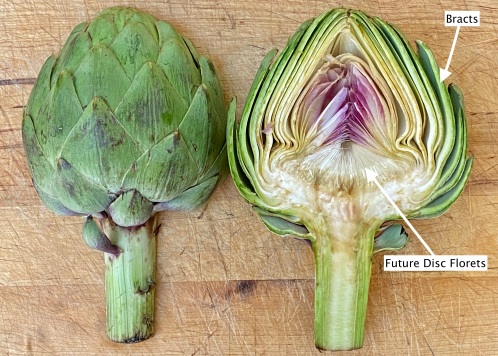
Knowing this, I forevermore will say a prayer of gratitude when I remove those less edible filaments from a stuffed artichoke. For without the choke, we would not get seeds for more artichokes! THAT would be a travesty.
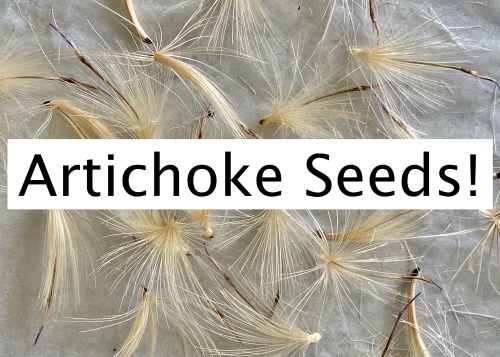
Studying and photographing the unfolding reproductive cycle of flowers in my garden has been a source of joy, a saving grace, and a silver lining of diversion while living through this crazy pandemic. I am grateful to my mother for instilling in me a love of gardening and to Mother Nature for providing everything I need to grow food in my backyard. I hope to inspire others, most especially children, to experience the peace and thrill of planting a seed, watching it grow, and being a witness to the beauty of the natural world.
A moth imbibing in nectar.
If there are cool-weather plants such as asters, cosmos, chickory, or chrysanthemums in your yard, maybe cut one open and see for yourself!

I am grateful to my fellow naturalist and Instagram friend, Rose Marie Trapani, for sending me a flowering artichoke in the MAIL so I could dissect it. That’s a whole ‘nother story! You can follow Rose Marie @oursiciliantable on Instagram.
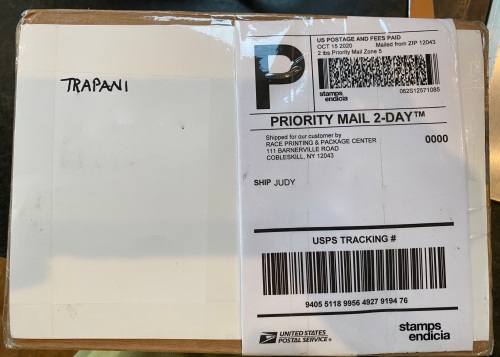
Related Posts
How to Build a 4 x 4 Raised Garden Bed
Winter Floral Arrangements Using Greenery from the Yard
Lemon Tree Very Pretty
Family Dirt
Edible Landscaping with Nashville Foodscapes
© 2014-2020 Judy Wright. All rights reserved. Photos, videos, and text may not be reproduced without the written consent of Judy Wright.
Follow Judy’s Chickens on Instagram and Pinterest @JudysChickens.
If you enjoyed this post, consider becoming a follower. Be sure to press “confirm” on the follow-up letter sent to your email address.


Fascinating, educational and inspiring all at once! Thank you for brightening my Sunday morning : )
Mary
This was so interesting, I learned a lot!!! The labeled photographs were brilliant!
What a lovely post Judy!
So fun to learn about some of my favorite flowers and food!
Happiest Thanksgivings to all your brood.
Kim
Kim Barrick Studio http://www.kimbarrickstudio.com
Sent from my iPhone
>
A very bright and happy family Thanks sandra
Judy, this was a brilliant post, full of new information, and your photography is great. You are amazing. Melinda Wray
>
Thank you, Melinda. Such kind words that I so appreciate.
Judy, such a beautiful blog! So well-written and the pictures are not only gorgeous but also so nicely labeled. Takes me back to Mr. Murray’s 10th grade honors biology class! Thanks for this lovely piece of scientific literature and the 30+ year time warp.
Sunil! Thank you for such a kind and encouraging comment. I shared it with Kelly and Jesse! I have been spending a lot of time studying flowers and plants this fall. While doing so, I often think, like you, about how I surely learned all this in school, but dang if I remember the specifics of any of it; I just didn’t care back then. Now. I can’t read enough about botany! It took me two months to write this post because of all the little rabbit holes I went down. My favorite hole was learning how sunflower seeds and artichoke bracts are arranged in nature according to the Fibonacci Sequence! Well, great to hear from you, Sunil. Thank you.
Fascinating eye-opener! Had no idea that I seemingly love and grow so many in this plant family in my high-desert garden in Bend, Oregon. They mostly all come back year after year, from June through September, without much intervention. Echinacea, common daisy, black eyed Susan, tiny purple and white asters, and a favorite, sunflowers of all kinds. Looked up a local favorite, Mexican Hat (Ratibida columnifera), as it seemed to also have the same structures you mentioned, and Yes!, It’s in the same family. I’ll have to admit I do dig out of my lawn the dandelions, and choose not to eat the leaves. Have a dog, you see. Thank you for an enlightening article!
Dear Corni, thank you for sending such a delightful message. I’m always happy to hear what flowers grow in desert-like conditions and will check on the ones you mentioned that are new to me. Do you grow cosmos? I love how drought-resistant they are. I never even water them! By the way, I’m only keeping the dandelions that come up in my fenced-in vegetable garden! Thanks for writing!
Always enjoy your blog! It brightens my world!! Hope all is well with you and yours! Peace be with you!
Fascinating, Judy! I enjoyed the lesson and the dissections! But your comments about dandelions transported me 50 years back to the taste of dandelion leaves served by my little Abruzzo grandmother (bitter to my young palate, as I recall.) The memory brought a smile as I remembered her culinary skills — homemade noodles, the most amazing turkey stuffing, and those darn lentils which we had to eat for good luck (but eaten with her chicken noodle soup, which definitely softened the blow!) The wonderful odor in her kitchen was always a combination of Parmesan/Romano cheese and tomato sauce. Thanks for bringing that memory to the forefront! Keep writing and stay well!
Beth!! Those are my favorite smells, as well! Smells can definitely transport you to a different moment in time. The smell of marigolds and red annual salvia always make me think of my grandfather’s gardens. I’m wondering if I knew you were part Italian? That means the grands have Italian genes on both sides! It is always nice to hear from you. Thanks for the encouragement. xo
Judy,
This was timely and informative for me, as it answered questions I had about seed saving. I had noticed both disc and ray seeds but was confused until I read this. You explained and photographed it beautifully. Would you post this to our Second Sunday Gardeners Google Group? I know it would be appreciated!
Thank you so much, I learned a lot today!
Maureen May
Hi, Maureen! Hate that I missed the seed exchange. Yes, I have done lots of research on this post over the last two months trying to understand it and then teach it. Glad you enjoyed it. I posted it to the SSG. Stay well!
What a wonderfully informative & beautiful lesson! Here in southern California, when I had bee hives, I learned that dandelions are a honey bees first pollen & nectar source in spring, so a very important flower. Thanks!
Thank you! Good to know about the bees. I think we’ll get into bees next. I’m waiting for my husband to come up with the idea so he can manage them! Thank you for writing!
I am always amazed at your joy and curiosity about the natural world.
And I always love to hear from you, Dolores. Stay well. xo
Judy, This is fascinating and has been forwarded to gardening friends. Life here is pretty confined with people very careful and responsible. That being said I do have small pods of friends who get together. Now that we are moving inside in large distanced spaces we’ll see. Hope this finds you, Kelly and your family safe and well Love, Phyllis
>
Hi, Phyllis! Thank you for sharing. I’ve been working on it for weeks, ever since I tried to save zinnia seeds from an unusually colored zinnia and wondered about if the disc seeds were fertile. We, too have been careful. We have had a long warm fall thus far so have continued to visit with pods of friends outside. We are all well. Glad to hear the same is true for you. Stay well. xo
Very informative. Thank you!
I love dandelions! When the boys were small they put the blooms in my hair and I put the greens in my soup!